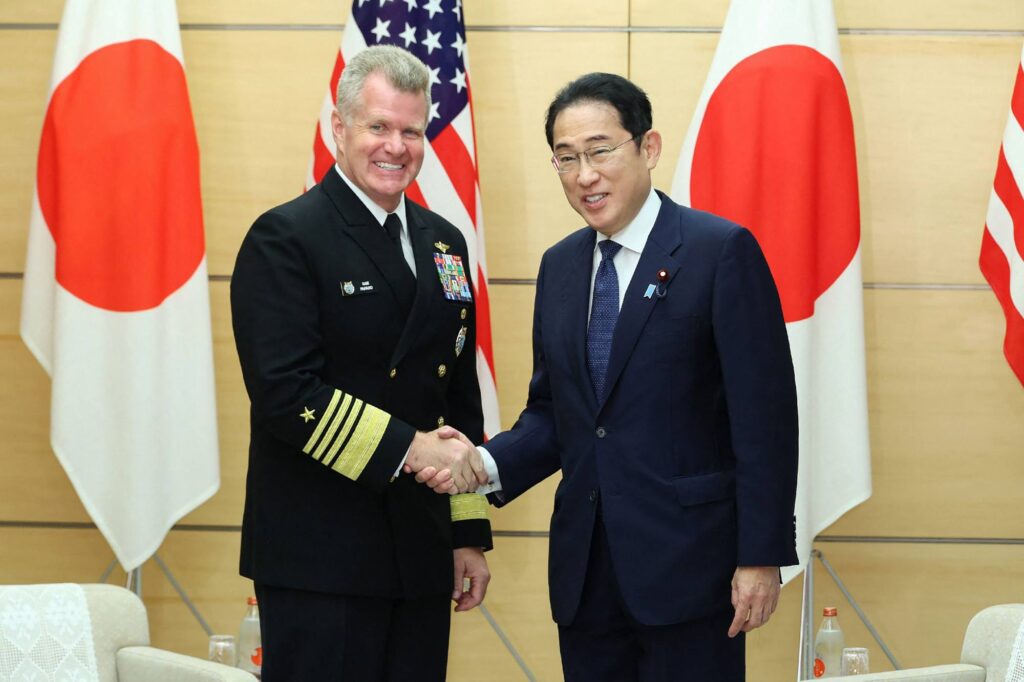In an interview with the Washington Post that, somewhat irreverently, I would describe as explosive (literally), Admiral Samuel Paparo, head of the US Indo-Pacific Command, unveiled a bold and worrying plan to deal with a possible Chinese invasion of Taiwan. The idea? Transform the Taiwan Strait into a “hellscape” of drones, with the aim of paralyzing Chinese forces and gaining precious time to organize the defense of the island.
A strategy that once again raises profound questions about the nature of modern warfare and the risks of uncontrolled escalation.
A nightmare plan in the Taiwan Strait
Admiral Paparo’s words leave no doubt: in the event of a Chinese attack on Taiwan, the United States is ready to unleash a veritable hell of drones in the strait. The stated objective is to “make the lives of the Chinese absolutely miserable for a month”, thus gaining the time necessary to organize the defense of the island.
But behind this statement lies a much more complex and worrying reality. The massive use of drones, submarines and unmanned boats represents a qualitative leap in the arms race between the two superpowers. A race that threatens to spiral out of control and transform the Taiwan Strait (and beyond) into a high-tech battlefield, with unpredictable consequences for regional and global stability.


The “Replicator Initiative”: thousands of drones controlled by AI
Whoever thinks that Admiral Paparo’s plan is just an impromptu outing within the framework of Sino-American skirmishes, he could be seriously mistaken. The statement is part of a broader US strategy to counter China’s growing military power. Already last year, Deputy Secretary of Defense Kathleen Hicks announced the “Replicator Initiative”, a project aimed at deploying thousands of drones controlled by artificial intelligence in the next 18 to 24 months.
The stated objective? That of closing the gap with China in terms of “mass”: more ships, more missiles, more forces. But the use of AI in the military raises enormous ethical and strategic questions. What control will humans have over these drone swarms? What will be the rules of engagement? And above all, how can we avoid an uncontrolled escalation in the event of a conflict?
“Mandatory” escalation for countries affected by the Taiwan Strait?
The high-ranking American officer is well aware of his comments, which are anything but the result of his sole initiative. Paparo says countries in the region have only two choices: submit to China, giving up some of their freedoms, or “arm themselves to the teeth.” If you feel like you’ve heard it before, maybe you have.
A Manichean vision which seems to leave little room for diplomacy and dialogue. And which risks dragging Asia-Pacific countries into a spiral of militarization and tensions, with direct consequences on the security and well-being of everyone. Even American citizens themselves, I might add.
Towards a future of robot wars?
Ultimately, Admiral Paparo’s words sound like yet another nail in the coffin of the “analog” military era. The future is a planet where no Taiwan Strait battlefield will be populated by swarms of autonomous machines, programmed to wreak destruction and chaos.
Faced with this perspective, it is urgent to open a serious and in-depth debate on the ethical, legal and strategic implications of these new technologies. A debate that involves not only the military and politicians, but also civil society, academia and international organizations.
It is only through open and transparent debate that we can hope to govern the evolution of armaments and avoid catastrophe. Because in a world of drones and AI, peace and security cannot be left in the hands of algorithms and machines. They must remain under the control of reason and human conscience, which the admiral, nor others like him, of any nation obviously do not have.





